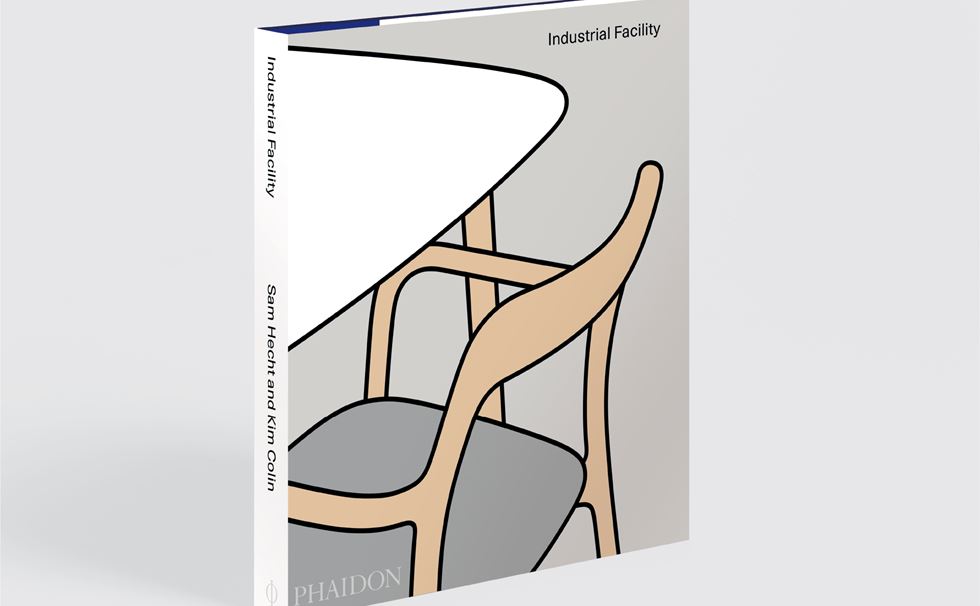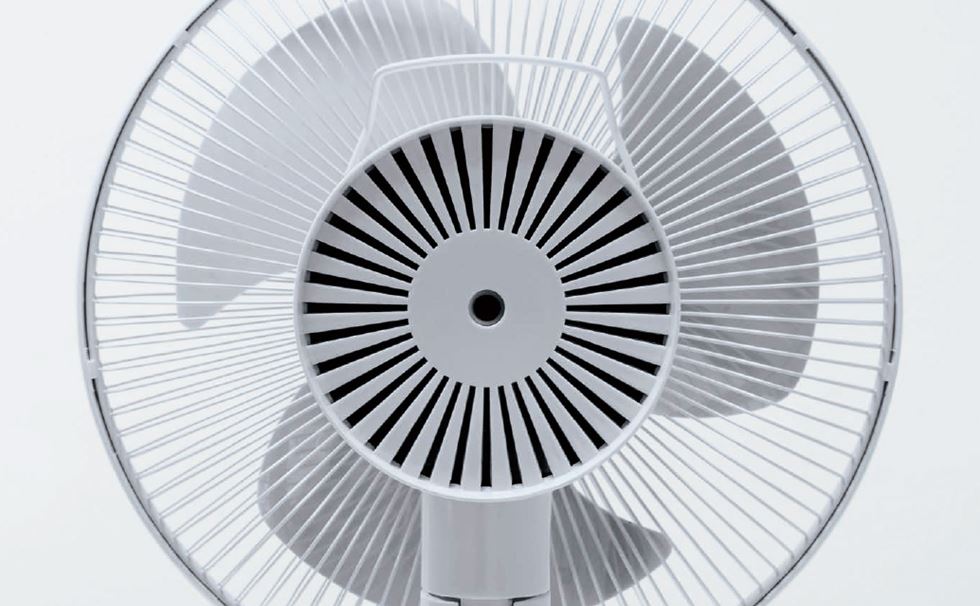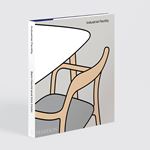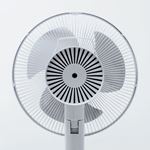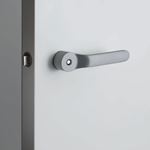May's book of the month The Phaidon Book Club
Industrial Facility
One of the most impressive things about the London design practice Industrial Facility is the way founders Kim Colin and Sam Hecht draw inspiration for their sleek, modern products from the most lowly, unlikely sources. Here are three of their creations that followed that design path.
TABLE, BENCH, CHAIR
This impressive, minimal hybrid for Established & Sons came to the designers while taking a ride on Japanese public transport.
“It was while riding the Tokyo Yamanote line that we noticed the seating on one of the trains appeared as long red benches, free of any armrests that would normally divide it into individual seats,” they write in their new book.
“To overcome the problem of seat assignment, the bench had one pink coloured zone – the size of a chair – so that the first person to enter the train would unconsciously gravitate towards this pink part and sit down. This first passenger had then effectively subdivided the rest of the bench for everyone else, so that no space was lost as the train filled up along its journey.”
Sam and Kim realised this solution could be transferred. “What if there was a bench that used the frame of a chair to create a sitting zone?” they explain in the book. “We tried it out on a project for Established & Sons. An oak plank acts as the bench, which can be of varying lengths, with a bent wood and concave soffit used to delineate the seat.”
“The juxtaposition of a bench, a chair and a table is visually perplexing, but Sebastian Wrong, art director for Established & Sons, relished the controversy. “He made sure to have it crafted so well that it lifted it above any humorous association. Its presentation in Milan’s La Pelota was striking: the dim lighting with bare wood made for a contemplative atmosphere.”
THE DOOR HANDLE
“Sam had noticed that builders across the street were using temporary door handles supplied by the manufacturer during construction, until the ‘good ones’ could be fitted. They looked similar to a tool that slipped on to a square peg and, in our opinion, looked and worked better than the replacement ones.
“We thought it would be nice to move this idea to greater prominence, and designed a handle that resembled a metal wrench, which, with its ergonomic contours, appears to grasp an exposed square bolt,” they explain.
“Both the handle and peg visibly turn together.” This project remains a good example of Industrial Facility’s early works – an idea driven by initial curiosity, borrowing rather than inventing; and using function as an aesthetic driver so that there is always a lightness of touch in the finished design.
THE MUJI FAN
Industrial Facility aren’t overly showy designers, but they manage to introduce a modicum of playfulness into their modern, minimal creations, as Alain de Botton notes in his introduction to their new book.
When Sam and Kim received the commission for an electric fan for Muji, they realized that, although we enjoy a cooling breeze from just one side, we often end up looking at the object from all angles.
“Recognizing that a rotational cooling fan is often found in the middle of a room where all its sides can be seen, we decided to give as much attention to the back as to the front.” This decision made their overall task more difficult, as the rear fan motor and gear system had to be reconfigured to obtain a perfectly smooth cylinder.
“The rationale for this was not just for ‘cleaning up’ the product,” explain the designers, “but also to make a connection to the inherent roundness of the front and to the translation of motion in the rotation of the blades.”
In search of inspiration, Sam visited the RAF Museum in North London, to take pictures of jet engines employed in fighter planes. These photos formed the basis of Industrial Facility’s concentric grid, fitted to the fan’s rear, which gives this often flimsy summer office staple ‘product power’ as Hecht calls it.
To hear more from Sam and Kim, come to the Design Museum on 8 May, when the Industrial Facility founders will be talking through their work, their outlook and their new Phaidon book. You can book tickets here, and you can order copies of the new book here.
